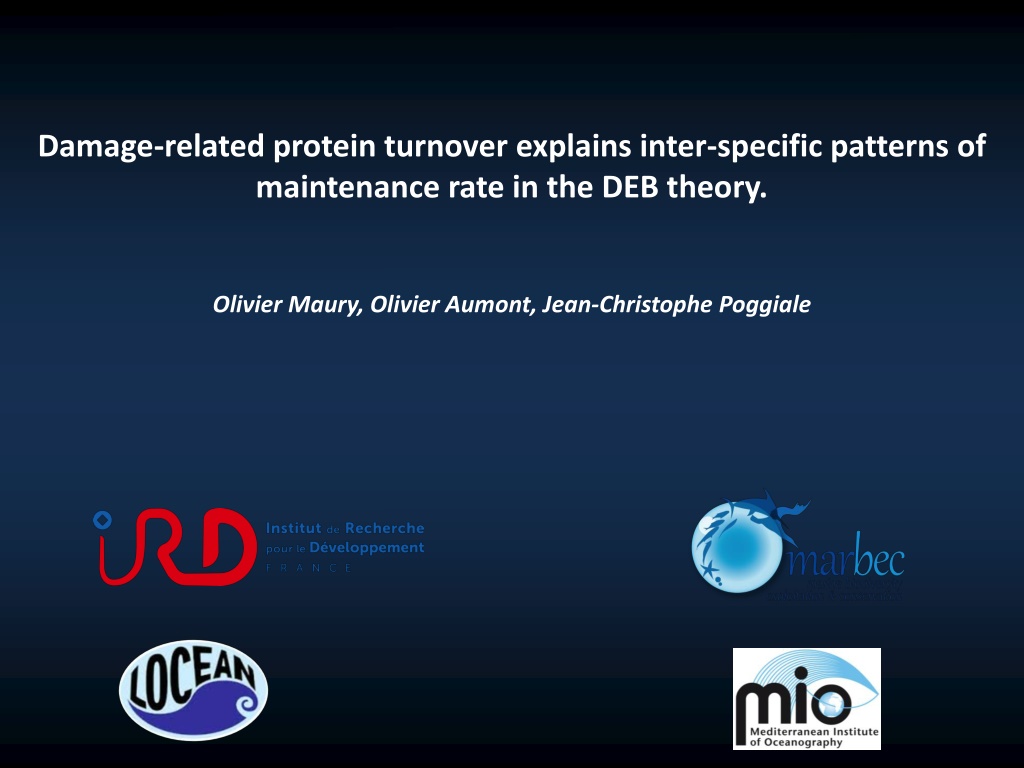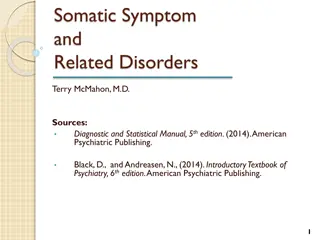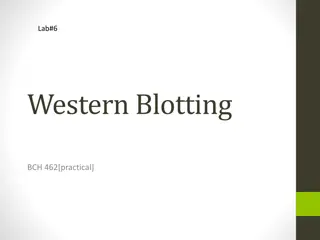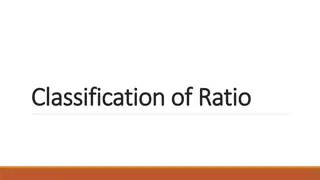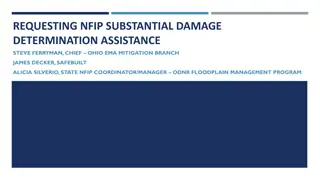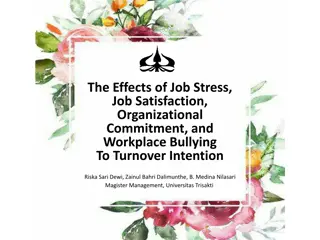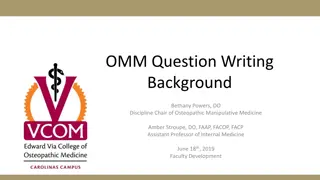Exploring Damage-Related Protein Turnover in Relation to Somatic Maintenance in the DEB Theory
Unraveling the intricacies of somatic maintenance, this study delves into the role of protein turnover in explaining inter-specific maintenance rate patterns within the Dynamic Energy Budget (DEB) framework. Empirical observations shed light on the metabolic processes involved in maintaining organismal structures in a viable state, encompassing aspects such as cellular repair, membrane integrity, and physiological functions. The analysis extends to interspecific body-size scaling relationships and trait-based approaches, offering valuable insights into the fundamental principles governing energy allocation in various species.
Download Presentation

Please find below an Image/Link to download the presentation.
The content on the website is provided AS IS for your information and personal use only. It may not be sold, licensed, or shared on other websites without obtaining consent from the author. Download presentation by click this link. If you encounter any issues during the download, it is possible that the publisher has removed the file from their server.
E N D
Presentation Transcript
Damage-related protein turnover explains inter-specific patterns of maintenance rate in the DEB theory. Olivier Maury, Olivier Aumont, Jean-Christophe Poggiale
Empirical patterns of maintenance Protein turnover & aerobic metabolism Intra- and inter-specific scaling of maintenance Impacts on the DEB theory? Conclusion What is somatic maintenance Somatic maintenance = energy used to maintain the structure in a viable state. Costs not associated to the production of biomass (growth & reprod.) or to development (maturation): removing and replacing damaged proteins (turnover = 70-90% of maintenance costs), maintaining chemical & electrical gradients through cellular membranes, forming products (scales, hair, nails, etc), maintaining muscular tonicity, circulating body fluids (blood, lymph, etc), moving, etc Somatic maintenance rate can either be proportional to structural volume [ ]V pM= pM { }V2 3 pT= pT to structural surface
Empirical patterns of maintenance Protein turnover & aerobic metabolism Intra- and inter-specific scaling of maintenance Impacts on the DEB theory? Conclusion Interspecific body-size scaling relationships Somatic maintenance = similar metabolic processes between species intensive parameter Inter-specific body-size scaling relationships (Kooijman, 2010) Respiration rate Gestation time (eutherian mammals) Incubation time (birds) Growth rate Length at puberty (fish)
Empirical patterns of maintenance Protein turnover & aerobic metabolism Intra- and inter-specific scaling of maintenance Impacts on the DEB theory? Conclusion Trait-based approaches An infinite number of species can be represented using the same DEB parameters 7 6 Structural Growth Rate (cm3.d-1) 5 4 3 Biomass (J.J-1.m-3.m-3) 2 1 0 0 20 40 60 80 100 120 140 160 180 200 Body Length (cm) 0.12 0.1 Ageing Mortality (d-1) 0.08 0.06 0.04 0.1 1 10 100 1000 0.02 Body Length (cm) 0 0 20 40 60 80 100 120 140 160 180 200 Body Length (cm) Maury & Poggiale, 2013
Empirical patterns of maintenance Protein turnover & aerobic metabolism Intra- and inter-specific scaling of maintenance Impacts on the DEB theory? Conclusion Waste to hurry paper (Kooijman, 2013) Are inter-specific scaling rules verified in the add-my-pet collection (2013, 165 species)? Kooijman, 2013 varies over more than 3 orders of magnitude from 3 to 8000 J.d-1.cm-3 at 20 C. It exhibits both a trend and huge variability around this trend. varies logically in the inverse proportion
Empirical patterns of maintenance Protein turnover & aerobic metabolism Intra- and inter-specific scaling of maintenance Impacts on the DEB theory? Conclusion Waste to hurry paper (Kooijman, 2013) More recent addmypet estimates confirm the trends of somatic maintenance 3.E+03? 3.E+02? [p_M],? J/d.cm^3? 3.E+01? 3.E+00? 3.E-01? 1.E-08? 1.E-06? 1.E-04? 1.E-02? 1.E+00? 1.E+02? 1.E+04? 1.E+06? 1.E+08? Maximum? structural? volume? Vm? (cmx^3)? 303 species 685 species http://www.bio.vu.nl/thb/deb/deblab/add_my_pet/patterns.html Small species have a high and large species have a low somatic maintenance rate: Species waste resources for remaining small, growing fast, and speed-up the life-cycle Respond rapidly to environmental variability = evolutionary argument Phenomenological, no clear mechanism for explaining the generality of the pattern observed Can we find a mechanistic process that would explain dispersion & trend of estimated maintenance?
Empirical patterns of maintenance Protein turnover & aerobic metabolism Intra- and inter-specific scaling of maintenance Impacts on the DEB theory? Conclusion A simple physiological mechanism to explain the patterns of maintenance protein turnover rate & cell repair constitute the most important component of maintenance, Damaged protein removal Heating costs FOOD pM Structural maintenance ingestion +pD pG pD pX V D p pC A GUT E pR 1- EH/ER Embryo pJ egestion Maturity maintenance FECES
Empirical patterns of maintenance Protein turnover & aerobic metabolism Intra- and inter-specific scaling of maintenance Impacts on the DEB theory? Conclusion Mass balance Damaged protein removal Heating costs Structural maintenance V D E
Empirical patterns of maintenance Protein turnover & aerobic metabolism Intra- and inter-specific scaling of maintenance Impacts on the DEB theory? Conclusion Protein turnover is linked to aerobic metabolism Mass balance equation: Aerobic organisms oxidize organic molecules to produce ATP reactive oxygen species (ROS) ROS oxidize amino acids in proteins protein damage rate proportional to aerobic metabolism (cf. ageing). O (cm3.J-1) volume of structural proteins damaged by one joule spent in aerobic metabolism. Degrading damaged structural proteins has a cost (J.cm-3) cost of removing a fixed volume of damaged structure With The fraction of aerobic metabolism allocated to protein turnover.
Empirical patterns of maintenance Protein turnover & aerobic metabolism Intra- and inter-specific scaling of maintenance Impacts on the DEB theory? Conclusion The maintenance rate varies with both L and Lm The total volume-specific maintenance rate varies at the intraspecific level with V The total volume-specific maintenance rate varies at the interspecific level with Vm 10000? ? m a i ntenance? rate? (J.d-1)? 1000? 100? Total? volume-specific 10? Lm=0.02cm Lm=0.2cmLm=2cm Lm=20cm Lm=200cm 1? 0.00001? 0.0001? 0.001? 0.01? 0.1? 1? 10? 100? 1000? Structural? length? L? (cm)? If you want to waste and hurry: be small, have a small Vb, and die long before reaching Vm
Empirical patterns of maintenance Protein turnover & aerobic metabolism Intra- and inter-specific scaling of maintenance Impacts on the DEB theory? Conclusion Addmypet maintenance estimates distribute in the expected interval We can plot expected highest (at Vb) and lowest (at Vm) maintenance curves Lb fixed arbitrarily at 4.10-3 Lm 3.E+04? 3.E+04? 3.E+04? ? m a i ntenance? rate? ? m a i ntenance? rate? Total? volume-specific ? m a i ntenance? rate? 3.E+03? 3.E+03? 3.E+03? (J.cm-3.d-1)? (J.cm-3.d-1)? (J.cm-3.d-1)? 3.E+02? 3.E+02? 3.E+02? Total? volume-specific Total? volume-specific Vb 3.E+01? 3.E+01? 3.E+01? Vm 3.E+00? 3.E+00? 3.E+00? 3.E-01? 3.E-01? 3.E-01? 1.E-08? 1.E-08? 1.E-06? 1.E-06? 1.E-04? 1.E-04? 1.E-02? 1.E+00? 1.E+02? 1.E+04? 1.E+06? 1.E-02? 1.E+00? 1.E+02? 1.E+04? 1.E+06? 1.E-08? 1.E-06? 1.E-04? 1.E-02? 1.E+00? 1.E+02? 1.E+04? 1.E+06? Maximum? structural? volume? Vm? (cm3)? Maximum? structural? volume? Vm? (cm3)? Maximum? structural? volume? Vm? (cm3)? Addmypet estimate fall somewhere in between min and max values They would correspond to an average value for the range of sizes used for estimation
Empirical patterns of maintenance Protein turnover & aerobic metabolism Intra- and inter-specific scaling of maintenance Impacts on the DEB theory? Conclusion Influence of the scaling of the maximum reserve energy density [Em] Maximum? reserve? energy? density? [Em]? ? 1000000? 100000? 3.E+04? ? m a i ntenance? rate? 10000? y? =? 3612.5x0.3819? 3.E+03? 1000? (J.cm-3.d-1)? 3.E+02? Total? volume-specific 100? 3.E+01? 10? 3.E+00? 1? 0.001? 3.E-01? 1.E-08? 1.E-06? 1.E-04? 1.E-02? 1.E+00? 1.E+02? 1.E+04? 1.E+06? 0.01? 0.1? 1? 10? 100? 1000? Maximum? structural? volume? Vm? (cm3)? Maximum? structural? length? Lm? (cm)? 3.E+04? 3.E+04? 3.E+04? ? m a i ntenance? rate? ? m a i ntenance? rate? ? m a i ntenance? rate? 3.E+03? 3.E+03? 3.E+03? (J.cm-3.d-1)? (J.cm-3.d-1)? (J.cm-3.d-1)? 3.E+02? 3.E+02? 3.E+02? Total? volume-specific Total? volume-specific Total? volume-specific 3.E+01? 3.E+01? 3.E+01? 3.E+00? 3.E+00? 3.E+00? 3.E-01? 3.E-01? 3.E-01? 1.E-08? 1.E-06? 1.E-04? 1.E-02? 1.E+00? 1.E+02? 1.E+04? 1.E+06? 1.E-08? 1.E-06? 1.E-04? 1.E-02? 1.E+00? 1.E+02? 1.E+04? 1.E+06? 1.E-08? 1.E-06? 1.E-04? 1.E-02? 1.E+00? 1.E+02? 1.E+04? 1.E+06? Maximum? structural? volume? Vm? (cm3)? Maximum? structural? volume? Vm? (cm3)? Maximum? structural? volume? Vm? (cm3)?
Empirical patterns of maintenance Protein turnover & aerobic metabolism Intra- and inter-specific scaling of maintenance Impacts on the DEB theory? Conclusion Does it change the DEB theory? Growth at constant food keeps Von Bertalanffy 100? = 0 = 0.1 = 0.2 = 0.3 = 0.4 = 0.5 = 0.6 = 0.7 90? 80? Structural? Length? L? (cm)? 70? 60? 50? 40? 30? 20? 10? 0? 0? 10000? 20000? 30000? 40000? 50000? 60000? 70000? 80000? Age? (d)? Reproductive flux keeps the same as well = 0 = 0.1 = 0.2 = 0.3 = 0.7
Empirical patterns of maintenance Protein turnover & aerobic metabolism Intra- and inter-specific scaling of maintenance Impacts on the DEB theory? Conclusion Conclusion Empirical patterns of maintenance in addmypet invalidate DEB interspecific scaling rules. We propose a simple mechanism to explain empirical inter-specific scaling of maintenance. Making protein turnover explicit in maintenance. Linking protein damage rate to aerobic metabolism. It would restore inter-specific scaling rules in the DEB theory. It wouldexplain a (large?) part of the inter-specific variability of estimated maintenance. It provides a simple mechanism to the waste to hurry evolutionary hypotheses. Inter-specific patterns in addmypet suggest modifications of the standard DEB equations at the individual level strengthening the consistency of the theory. Adding one extra mechanistic parameter is more parsimonious than re-estimating it for every species. Parameter estimation for selected species should be conducted with modified DEB equations to test our proposition.
